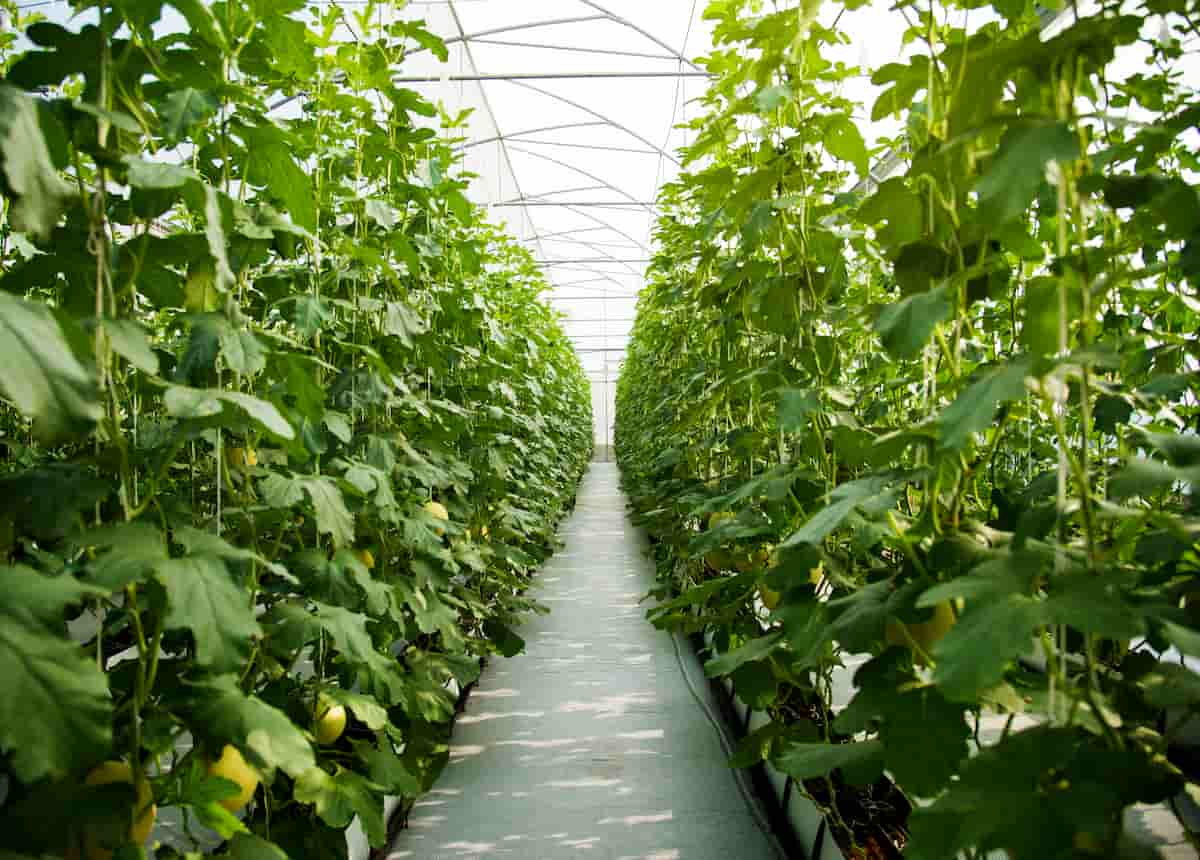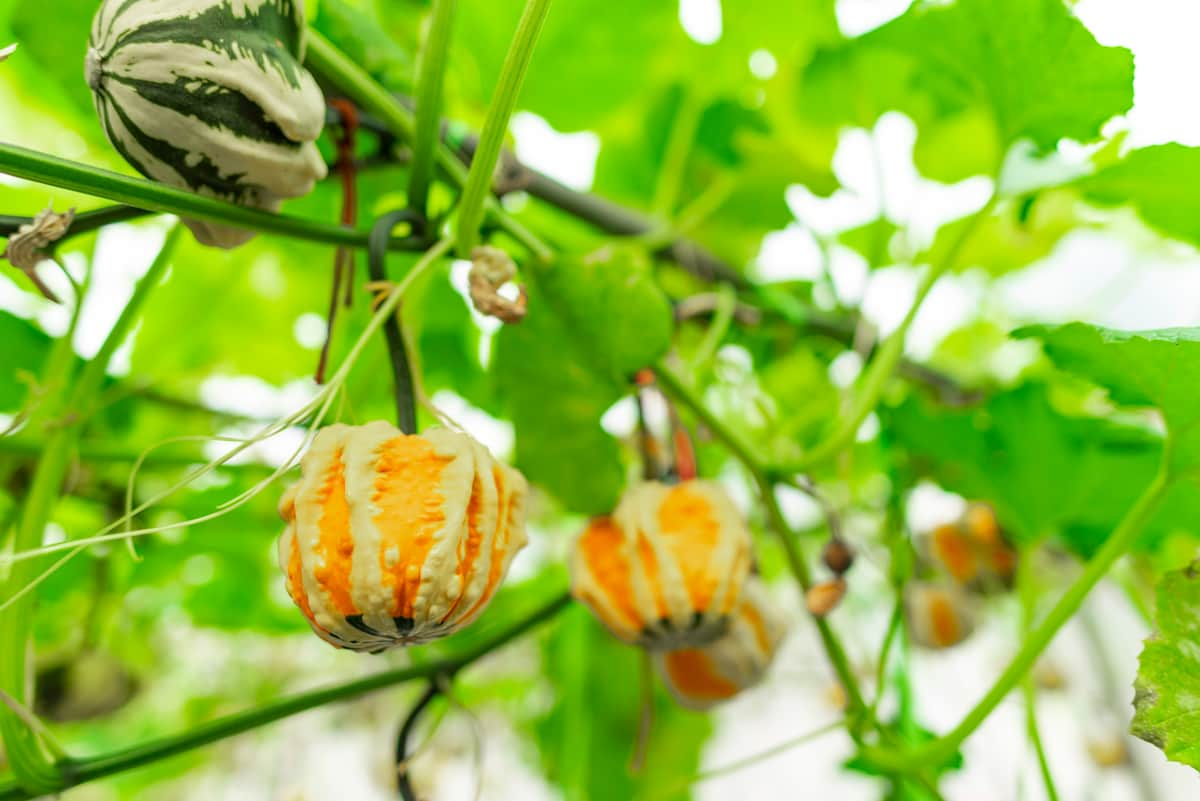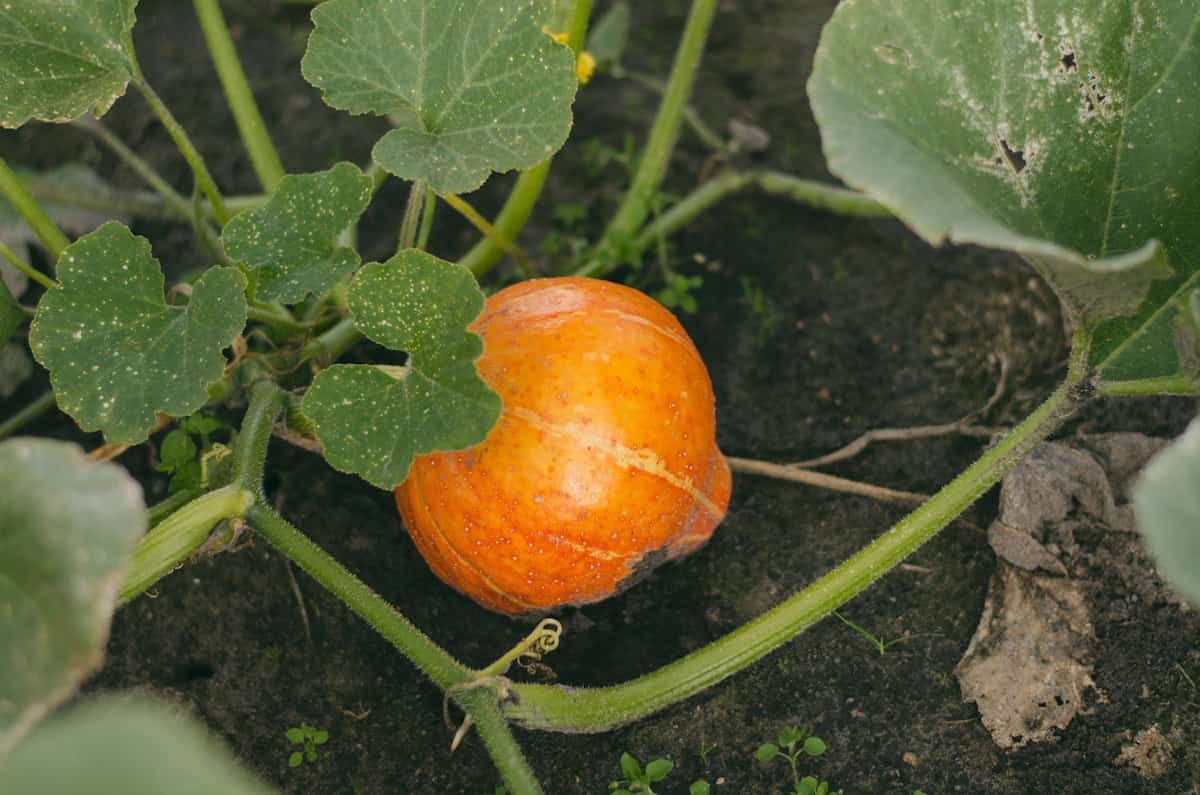A cold summer may not be the best time to grow pumpkins, but they can be quite easy to grow under the proper conditions. It is best to plant pumpkins in a sheltered and sunny spot in your garden, and since they like heat, you should plant them on last year’s compost since it will release heat as it decomposes. A greenhouse or polytunnel can be used to grow pumpkins, but you should know that pumpkins take up a lot of room. Vining pumpkins up a vertical frame or trellis can reduce the needed space.

How to Grow Pumpkin from Seed in Greenhouse
Some Pumpkin Varieties are Suitable for Growing in Greenhouse
| The First Pumpkin | Prizewinner |
| Lumina Pumpkin | Baby Boo |
| Porcelain Doll | Sugar Pie |
| Goosebumps | Jack-o’-Lanterns |
| New Moon | Jack-Be-Little |
Temperature Requirements for Growing Pumpkins in Greenhouse
It is important to grow pumpkins under direct, abundant sunlight and a warm environment, with temperatures varying between 24 – 29°C during the day and 16 – 21°C at night. Frost can be lethal to plants if the temperatures drop below 10°C, while temperatures below 10°C can cause plant damage.
Soil Requirements for Growing Pumpkins in Greenhouse
In cold climates, pumpkins grow best when the soil warms up quickly since they need a lot of heat. It is extremely important that the potting mix you use is well-draining, has a high humus content, and has a slight ability to retain water. Furthermore, pumpkins require a lot of organic matter, which you can add at the time of planting by adding compost or manure to the soil.
Growing pumpkins in soil with a pH level of about 6-7.2 is ideal for the growth of pumpkins. Growing pumpkins require a warm, sunny site and protection from the cold winds; the soil must also be fertile and moisture-retaining without being too wet. Cooler climates are generally less conducive to their growth. Even the more compact bush varieties can reach 90cm (3ft) in diameter, requiring plenty of space.
How to Grow Pumpkins from Seed
- The best time to sow pumpkin seeds indoors is mid to late April, as the plants have a long growing season.
- Seed compost should be filled into individual 9 cm pots.
- The seeds should be planted 2.5 cm (1 inch) deep on their sides.
- Plants should be planted in well-lit positions at around 20°C in pots that have been watered and placed in propagators or clear plastic bags. It should take around five to seven days for the seeds to germinate.
- Once the seedlings have germinated, remove them from the propagator or plastic bag and let them grow in a greenhouse or sunny windowsill until they are large enough to plant.
How to Plant Pumpkins
- Weather plays an important role in planning when to plant pumpkins. The pumpkins will not grow in the cold, so plant them in a sunny, sheltered location in late May or early June.
- Planting pockets can be created a few weeks before planting by digging holes approximately 20 cm (10 inches) square and 20 cm (10 inches) deep. Plants and rows should be spaced 2-3 m apart (6.5-10 ft).
- The holes should be filled with compost or well-rotted farmyard manure. It is important to remember that pumpkins are hungry plants and need rich, fertile soil to grow well.
- The best way to train pumpkins as climbers is to drive three sturdy poles into the ground and tie them together at the top to create a tripod or wigwam to support the plants. A strong structure is essential; even small pumpkin plants can weigh much by harvest time. Plant climber-grown pumpkins 1 meter (3.5 feet) apart.
- Place seedling pots outside during the day and bring them back inside at night for a week before planting.
- Each planting pocket should contain one seedling. A firm, well-watered soil should surround the plant.
Watering Requirements for the Greenhouse-Grown Pumpkin
Pumpkins, like all gourds and melons, require plenty of water and moist soil, so they need to be watered deeply and regularly. Never let the soil completely dry out when watering, and avoid wetting the foliage. Watering the plants will be easier if a 15 cm (6in) pot is sunk alongside them. This will ensure the water gets to the roots and doesn’t sit around the plant’s neck, which could cause rotting. The best results can be achieved by watering or irrigation infrequently – about 1.0 – 1.5 inches (2.5 – 4.0 cm) per week.
In case you missed it: Can You Grow Pumpkins from Store-bought Pumpkins: A Step-by-step Process Guide

Fertilizer Application for the Greenhouse-Grown Pumpkin
Fertilization is essential for pumpkin plants because they are heavy feeders. To grow bigger and more meaty pumpkins, you should have rich soil. The best fertilizer to use in the early stages of growth is a balanced fertilizer like 10-10-10. Whenever your plant reaches the point where it can produce flowers, switch to a fertilizer with low nitrogen and high potassium and phosphorus, like water-soluble fertilizer 5-15-15.
Pruning and Training Greenhouse Grown Pumpkin Vines
If you have plenty of space, you can let plants sprawl over the ground, but if you need to limit their spread, you can train the stems around in a large circle, inserting short canes to anchor them. Alternatively, you can simply cut off any stems that stray beyond their boundaries. Supports can also be trained up trailing types, but ensure they are sturdy enough to support these large, vigorous plants. Individually supporting the fruits may require netting. Plants with larger fruits on the ground do best when grown flat.
Pests and Diseases in Greenhouse-Grown Pumpkins
Pumpkins are robust plants but suffer from a few diseases, especially powdery mildew. Maintain a dry environment to prevent diseases. Among the garden pests you should watch out for are aphids, flea beetles, mealybugs, cucumber beetles, and squash worms. You can treat them with organic pesticides such as neem oil, or you can try commercial pesticides if they become more numerous.
Weed Control in Greenhouse-Grown Pumpkins
With time, pumpkins will naturally block the formation of many weeds as they spread out. Mulch, however, can inhibit and prevent invasive weeds from growing in your pumpkin garden. Additionally, hand-weeding and hoeing are recommended forms of control and herbicides, depending on the type of plants being grown.
Harvesting Greenhouse Grown Pumpkins
After planting, pumpkins are ready for harvest within 90-120 days (depending on the variety and growing conditions). Unripe and green pumpkins are also used in gourmet recipes and exotic cuisines. The best way to pick mature pumpkins is to wait until they harden and take on a uniform and intense color (orange for most types). If the pumpkin’s bark is hard and hollow when pressed with your thumb, it’s time to pick it. It should also be able to withstand pressure from nails. Generally, it takes about 100 days from planting pumpkin to harvesting it at full maturity.
In case you missed it: How to Grow Ridge Gourd in Greenhouse: A Step-by-Step Guide for Seed to Harvest

Conclusion
It’s not just Halloween that pumpkins are popular. They can be planted in greenhouses in the late spring and harvested in the fall or early winter. Soil conditions and weather conditions are the most important factors when growing pumpkins. No matter when you plant your pumpkins, warm soil, and weather throughout the growing season are crucial to their success.
- Feed Your Flock for Less: Top 10 Tips to Save on Chicken Feed
- Ultimate Guide to Ossabaw Island Hog: Breeding, Raising, Diet, and Care
- Hatching Answers: The Top 10 Reasons Your Chickens Aren’t Laying Eggs
- Eggs and Economics: Breaking Down the Cost of Raising Backyard Chickens
- Defend Your Greens: Proven Methods to Keep Iguanas Out of Your Garden
- Ultimate Guide to Cinnamon Queen Chicken: A Comprehensive Guide for Beginners
- Ultimate Guide to California Tan Chicken: Breeding, Raising, Diet, Egg-Production and Care
- Ultimate Guide to Marsh Daisy Chicken: Breeding, Raising, Diet, and Care
- 10 Types of Chicken Farming Businesses You Can Start for Profits